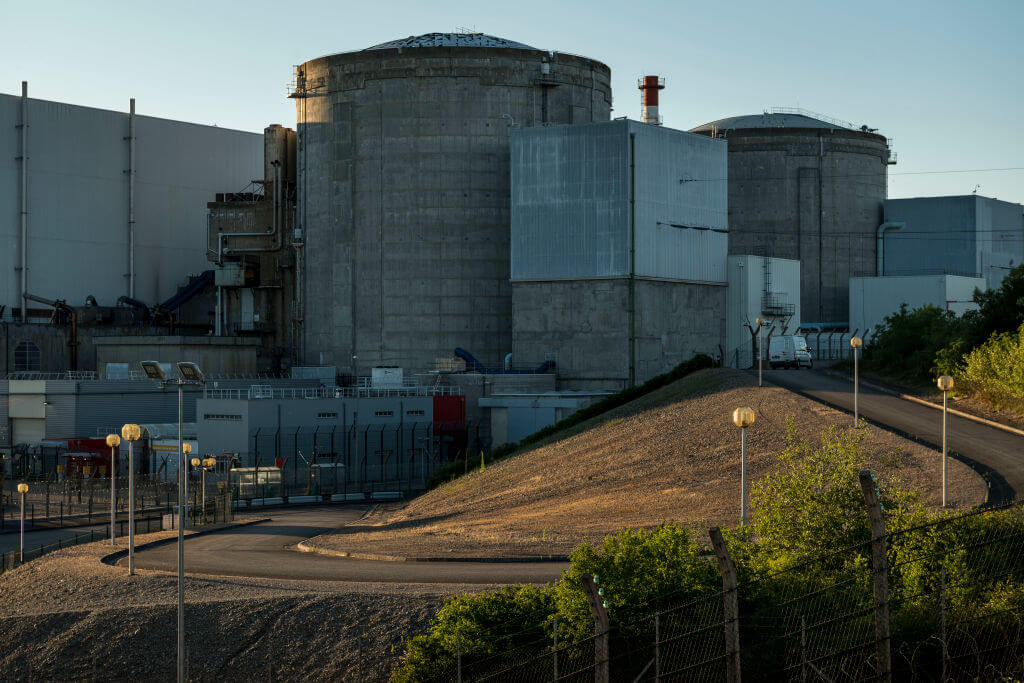Shortly before the U.S. presidential election in November 2020, back when Donald Trump was in power, Poland and the United States signed a strategic agreement to cooperate on the development of the former country's civil nuclear power program. Poland wanted to build six reactors 6-9 gigawatts (GW) of nuclear energy capacity, with those of 6 GW capacity being able to cater for some 80 percent of the country's demand for electricity. According to the plan, it will select adequate technology in 2021, followed by the preferred site selection in 2022. The construction of the first plants will now not start until 2026 and the first reactor will begin operation in 2033. Before that, Poland and the United States will work together on a report delivering a design for implementing Poland’s nuclear power program. The agreement provides it will be ready over the next 18 months.
- Read also: U.S. and Sweden in Cold War Era
U.S.-Poland cooperation consists in supporting relevant business entities and government-led activities. Beyond that, the agreement defines areas of cooperation as steps ranging from regulatory, research, and training, through developing supply chains, to raising public awareness. The deal marks a major milestone for the Polish authorities––for twenty years, the country has relied essentially on coal for most of its power.
Nonetheless, this agreement was not the first sign of Washington's energy cooperation with Central and Eastern European states. It started back in 2019 when the Partnership for Transatlantic Energy and Climate Cooperation (P-TECC) was initiated in Houston. The platform was created as a pathway for enhanced cooperation between the United States and the countries of Central and Eastern Europe on energy security and the transition to clean, carbon-neutral economies.
In early September this year, the U.S. Department of Energy and the Ministry of Climate and Environment of the Republic of Poland organized the third edition of the Partnership for Transatlantic Energy and Climate Cooperation Business Forum. In opening remarks, Polish Climate Minister Michał Kurtyka said the increase in the amount of renewables in the energy mix caused new challenges for energy security, including energy storage or efforts to handle the periods when there was not "enough sun or wind." Nuclear power seems a good answer, according to Piotr Naimski, the Polish government minister responsible for energy security and infrastructure. "It is essential for a new face of the Polish energy sector to construct the entire branch of nuclear energy, through nuclear power plants. It is safe and reliable and a nuclear plant does not produce carbon dioxide so it is friendly to the climate while addressing relevant EU energy strategies," the Polish official was quoted as saying.
U.S.-Poland energy cooperation is reflected in some activities of both state-run and private companies. As the P-TEEC forum was wrapping up, a few U.S. nuclear businesses were already in talks with some Polish companies. Furthermore, Polish private businesses are also making efforts to develop this branch of the energy industry.
- Read also: Nord Stream 2 Divides Europe
In early 2019, Polish chemical giant Synthos opened talks with GE Hitachi, a joint venture between U.S. conglomerate General Electrics and Japanese tech company Hitachi, on the construction of BWRX-300 small modular reactor (SMR). Their concept emerged some ten years ago in the United States to reduce the high cost of building large nuclear power plants. Both small and micro reactors are easy to build and cheaper than a typical nuclear power plant. In addition, they are less expensive to operate, possibly generating more modest energy costs in Poland. Importantly, small modular reactors can be built in factories while their modules can be assembled just like Lego bricks to produce more power.
Two companies––Synthos and ZE PAK––will construct a nuclear power plant in Poland, based on the BWRX-300 technology, the two businesses announced in late August. A 300 MW capacity reactor is estimated to cost some PLN 3.8 billion while it is planned to build between four to six units. The first reactor in Pątnów near Konin is expected to become operational in 2030, or a few years before the launch of the state-run power plant. Interestingly, the project earned support from Georgette Mosbacher, former U.S. ambassador to Poland and a Donald Trump appointee. In addition, Poland's state-controlled fuel and energy giant PKN Orlen has signed a cooperation agreement with Synthos on small nuclear projects. Both companies are to define areas of cooperation. Similarly, KGHM, the Polish copper giant, has inked a joint commitment with the companies NuScale Power, an American leader amongst producers of small modular reactors technology, and with PBE Molecule, to develop SMR technology. The first nuclear reactor is scheduled to be operational by 2029. Importantly, small reactors are unable to take over large state-run power plants. Instead, they complement them while gradually pushing out some of the fossil fuel generations. Thus they will be a vital addition to the energy transition process and fill in the void left by phasing out coal-based units. While private businesses keep concluding new deals, work is underway to draft the report for the Polish government.
Poland's "nuclear pathway" is key in many domains. An example is efforts to cement ties with the United States that cooled down after Joe Biden came to power. For Poland, a clear advantage of the nuclear energy pivot is to become independent of Russian energy commodities. This is essential now as gas has become a political weapon in Europe, especially after the Nord Stream energy pipeline was constructed.
A diversified energy mix that relies upon nuclear and renewable energy should in the future reduce energy prices, now growing amid the buoyant demand, also because of the prioritized manufacturing of electric vehicles in Europe. This is of top importance as countries such as Germany and the Netherlands––once green energy pioneers––are now producing more electricity in their coal-fired plants as they struggle with power outages. This stems from some political decisions to phase out nuclear power plants while the energy demand is rocketing, renewable energy sources are unreliable and provide less energy in adverse weather conditions, and gas storages now can hold too few commodities. In consequence, CO2 certificates trade high, prompting eye-watering energy prices, especially once combined with more expensive coal. There are also reports of power cuts in China, where more than a hundred factories have shut down as prices hit record highs amid coal shortage, forcing the country to ask Russia for help. This shows how important the energy market is now.
In this context, U.S. and Polish steps seem to push these two countries towards mutual benefits. The United States will be offered gigantic contracts while Poland is paving its way towards energy independence, zero-sum emissions, reduced tensions with Brussels and cheaper energy, the last of them poised to cheer up the public. It remains to be seen whether the Polish government did it right. Yet, many signs are that it indeed did. What confirmed that these efforts were successful was when France asked Poland and other states to sign a letter defending nuclear energy.
Author:
Jakub Łyjak graduated from law at the University of Adam Mickiewicz University in Poznań and economics at the Poznań University of Economics. He also studied Business Administration (Betriebswirtschaftslehre) at the Westfälische Wilhelms-Universität in Münster. He gained professional experience in the field of law and non-governmental organizations, including Polish Entrepreneurship and Leadership Association and Center for American Studies.
This article was written as part of the statutory activities of the Polish think tank Warsaw Institute. If you appreciate the content prepared by our partner, we appeal to you for financial support for this non-profit organisation.
More information:
www.warsawinstitute.org/support/



